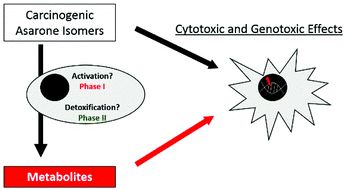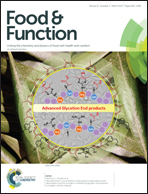In vitro genotoxicity of carcinogenic asarone isomers
Abstract
The present study focused on genotoxic properties of the carcinogenic phenylpropanoids α-asarone and β-asarone, which are found in several herbs and spices, such as Acorus calamus or Acorus gramineus. Cytotoxic and genotoxic effects were determined in human liver carinoma HepG2 cells, in hamster lung fibroblast V79 cells and in human cytochrome P450 1A2 and human sulfotransferase 1C2 transfected V79 cells (tV79). The Alamar blue assay was used to measure cytotoxicity of both isomers prior to the identification of DNA damaging properties by single cell gel electrophoresis (comet assay). Furthermore, the phosphorylation status of the histone H2AX, as a response of DNA double strand breaks, was investigated in HepG2 cells by Western blot analysis and visualized by immunofluorescence microscopy. After 24 h of incubation a significant reduction of cell viability was found. Moreover, both asarone isomers induced DNA strand breaks in V79 cells after 1 h of incubation. In tV79 cells even more pronounced DNA damaging properties were exhibited, whereas in HepG2 cells the compounds were found to be less effective. Furthermore, in tV79 cells a significant increase of formamidopyrimidine-DNA-glycosylase-sensitive sites was observed. DNA strand breaks, induced by aA, were to some extent characterized as DNA double strand breaks. In summary, asarone-induced cytotoxicity and genotoxicity is strongly influenced by the cellular metabolic enzyme status and therefore, a contribution of their respective metabolites to in vitro toxicity can be suggested.



 Please wait while we load your content...
Please wait while we load your content...